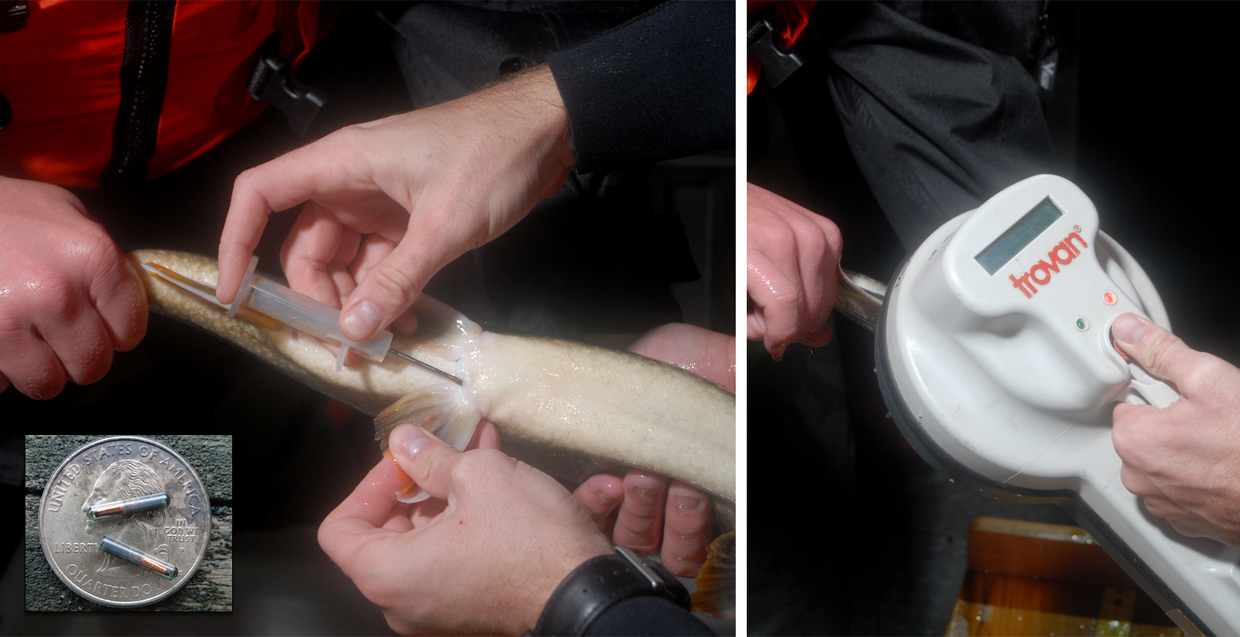- Division of Fisheries and Wildlife
Media Contact
Media Contact, MassWildlife

Each fall, MassWildlife samples the Quabbin and Wachusett Reservoirs to monitor lake trout populations. With the help of DCR, lake trout surveys on Wachusett are nearly complete and Quabbin surveys are set to begin this week.
Lake trout typically spawn in late October and November when the surface water temperatures are around or below 55°F. The spawning grounds are typically shallow, rocky waters on windy shores of the Reservoirs; spawning occurs mostly after dusk. Night sampling on big waters can be cold and icy in November, but the information it provides biologists is well worth the effort.
To capture lake trout, field crews set nets on spawning areas starting at sunset and check them about every 20 minutes. Captured fish are removed from the nets and placed in a livewell. Next, biologists record length, weight, and sex and implant a small Passive Integrated Transponder (PIT) tags in the fish. Prior to release, the adipose fin is clipped to provide an external mark indicating that the fish has been captured before.
Data collected provide biologists with an understanding of the current condition of lake trout populations. If fish are recaptured from previous tagging efforts, biologists can calculate individual growth rates. Lake trout are long lived and slow growing and it is not uncommon for a tagged fish to be recaptured 10 years later. In fact, the longest recapture interval recorded was 24 years! When other species like landlocked salmon, smallmouth bass, rock bass, and white perch are captured, biologists record information including length, weight, and sex but do not implant PIT tags. Sampling efforts like this are just one way that MassWildlife monitors the health of the fish resources of the Commonwealth.


